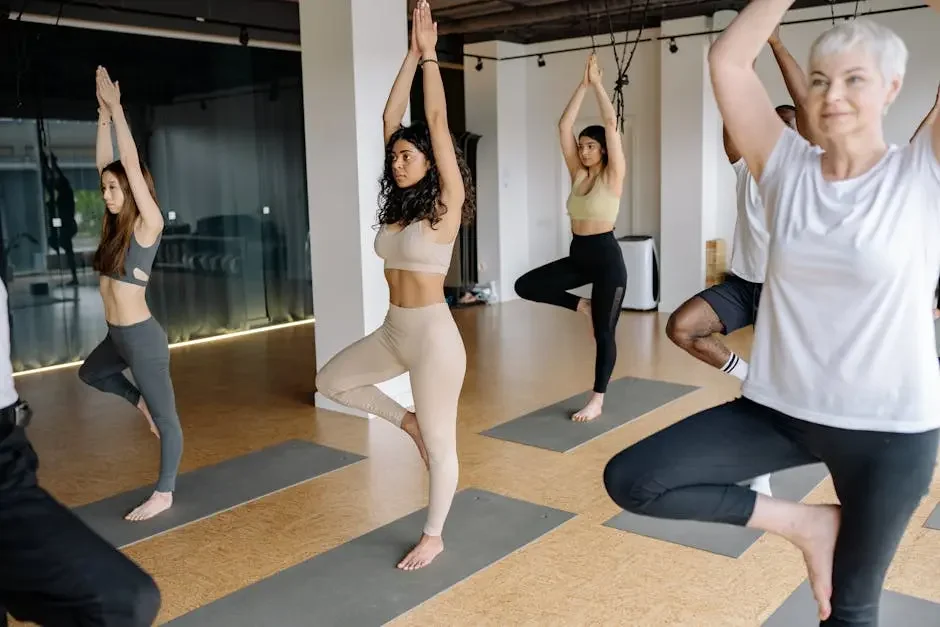Is Dynamic Fitness Suitable for Beginners?
Dynamic fitness is becoming a popular choice for many who want to kickstart their fitness journey. But for beginners, the question remains: is it the right fit? In this guide, we'll break down what dynamic fitness entails and whether it's suitable for those just starting out.
Understanding Dynamic Fitness
Dynamic fitness focuses on functional movements and combination exercises that promote flexibility and strength. It's essential to understand these concepts to assess its suitability for beginners.
At its core, dynamic fitness is about incorporating different types of movements that your body performs in everyday life. This means you’re not just lifting weights but engaging in exercises that mimic real-world actions, enhancing your overall fitness.
For beginners, this approach can feel less intimidating. Instead of isolating muscles in a gym, you’ll be moving your body in a holistic way. This makes learning the exercises more natural and enjoyable.
Understanding your body's movements plays a crucial role in building a solid foundation. As you explore dynamic fitness, you'll discover how to strengthen not only large muscle groups but also smaller stabilizing muscles that are often neglected in traditional workouts.
Assessing Your Fitness Level
Evaluating your current fitness level is crucial. This step will help you determine if you should jump into dynamic fitness or start with something more foundational.
When assessing your fitness level, consider how often you exercise currently and what types of activities you engage in. Be honest with yourself – if you’re brand new to fitness, it may be wise to ease into dynamic workouts.
A great way to assess your level is to try simple dynamic movements like lunges or squats to see how your body responds. If you find these manageable, you could be ready to take it a step further.
Don’t be discouraged by your current fitness level. Everyone starts somewhere, and understanding your baseline will empower you. Remember, the key is to progress at your own pace, celebrating small victories along the way.
The Benefits for Beginners
Dynamic fitness offers various benefits, such as increased flexibility, strength, and cardiovascular endurance, which can be particularly advantageous for beginners.
Flexibility is improved through dynamic movements which encourage full range motion. Unlike static stretching, dynamic exercises prepare your joints and muscles for movement, reducing stiffness and enhancing performance.
Additionally, the focus on strength building through functional exercises helps to carve out a stronger core and stable body, crucial for supporting all forms of physical activity – from lifting grocery bags to hiking on weekends.
Finally, the social aspect of many dynamic fitness classes can be beneficial. Joining a group class creates a community feeling, providing encouragement and motivation, especially for beginners who may feel unsure.
Tips for Starting Dynamic Fitness
If you decide to dive into dynamic fitness, start with basic movements, consider guided sessions, and listen to your body to avoid injury.
One practical tip is to get a trainer or join beginner-friendly classes. They can provide essential guidance and adjustments to ensure you're using proper form, which is key as you start out.
Additionally, make warming up an integral part of your workouts. A good warm-up routine prepares your muscles and reduces the risk of injury, making your experience more enjoyable.
Don’t forget to track your progress, whether it's through journaling, apps, or simply reflecting on how you feel after each session. This can help you stay motivated and adjust your approach as you grow stronger.
Common Challenges and Solutions
It's normal to face challenges as a beginner. Identifying these challenges such as coordination or stamina and finding strategies to overcome them can enhance your experience.
One common hurdle is the initial struggle with coordination when performing dynamic exercises. To tackle this, practice movements slowly at first. Gradually increase the speed as you become more comfortable.
Another issue may be feeling overwhelmed by various exercise options. Focus on mastering a few key movements before trying new ones. Layering your skills in this way will help you build confidence consistently.
Lastly, remember that the journey has ups and downs. Celebrate small achievements, and don't let temporary setbacks discourage you. Surround yourself with supportive peers to foster resilience and keep your motivation high.
Final Thoughts
In conclusion, dynamic fitness can be a suitable choice for beginners if approached correctly. Start slow, focus on form, and enjoy the process. With the right mindset and support, anyone can thrive in a dynamic fitness environment.

